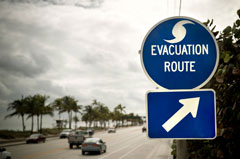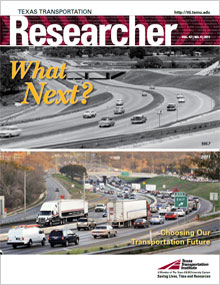This summer, many Texans may root for storms in the Gulf of Mexico to find their way to Texas. While area government officials would no doubt welcome the rainfall, past experiences involving mass evacuations along the Texas coast have taught them to be prepared for a difficult challenge should a hurricane hit.

Researchers at the Texas Transportation Institute (TTI) recently concluded a three-year project that produced a prototype design for an evacuation model for urban areas to use in the event of a threatening hurricane.
Sponsored by the Federal Highway Administration and the Texas Department of Transportation, the research was performed cooperatively with the University of Houston.
“We had a large, diverse panel that was very helpful in assisting us with our case study of the Houston-Galveston region,” says TTI Senior Research Engineer Russell Henk. “This region represents the most complex evacuation scenario. If we can make our model work here, we can make it work along the entire Texas coast.”
According to Henk, one of the more notable challenges is the decision-making process related to calling for contraflow operations on strategic evacuation routes. (Contraflow operations convert all roadway lanes into a single direction to facilitate evacuation.)
“Implementing contraflow operations is an expensive, resource-intensive undertaking,” says Henk. “Consequently, key operating agencies (and decision makers) involved in such deliberations are understandably hesitant to call for contraflow operations unless there’s strong evidence of the need to do so.”
The prototype model involves a number of inputs such as strength and size of the storm, human factors, and traffic conditions (both real time and predicted).
“The traffic simulation model we developed was the largest of its kind anywhere to date and essentially modeled the eastern portion of Texas, from the Houston-Galveston coastal area all the way inland to San Antonio, Austin and Dallas,” says Henk. “Running a simulation model that size takes a full day to run a scenario. It’s obviously a massive undertaking.”
Even though Henk says the goals of the project were met, there is still work to be done. “While this was a good starting point, and several scenarios (such as Hurricane Rita and Hurricane Ike) were selected to simulate past hurricane-evacuation scenarios, these events are rarely similar,” says Henk. “A much broader range of scenarios will need to be developed and examined before there’s a reasonable level of confidence that the new tool can be used on a widespread basis.”
